Notes: Waterloo Goods station was at the western end of the London & North Western Railway (LNWR) Waterloo branch that ran from Edge Hill to Waterloo Dock in Liverpool. Edge Hill was on the Liverpool & Manchester Railway (L&M) which had opened on xxx September 1830. The L & M line had as its western terminus the Wapping Goods station which was close to Wapping Dock. This was the older part of the Liverpool dock system and was south of central Liverpool. By the 1840s the dock system was expanding on the north side of the town. The L&M obtained an Act for the Waterloo branch in 1845 just before it was absorbed into the Grand Junction Railway (GJR) on 8 August 1845. On 16 July 1846 the GJR became part of the LNWR. In 1845 work began on the line which was almost all within two tunnels: Victoria (1 mile 947yd) and Waterloo (852yd).
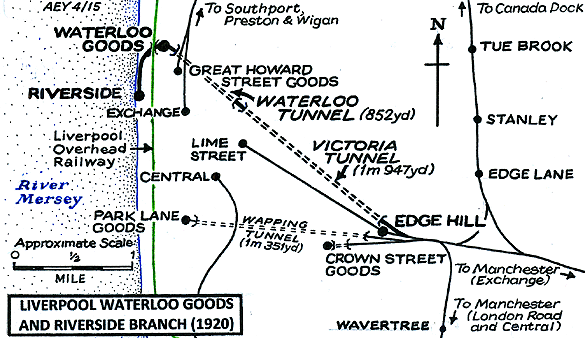 |
The Waterloo branch and the goods station opened on 1 August 1849. The station was on the east side of Waterloo Road. On the west side of the road were the Waterloo and the Victoria docks.
At the eastern end of the station Great Howard Street passed over the line on a twin arched iron bridge. Just to the east of Great Howard Street the Lancashire & Yorkshire Railway (LYR) line to Great Howard Street Goods station passed overhead at a high level via a large brick arch, the ‘Grand Arch’ which was designed by John Hawkshaw. To the east of the ‘Grand Arch’ there was another bridge also designed by John Hawkshaw. It was constructed from iron and was at street level. Beyond that bridge was the western portal of the Waterloo Tunnel into which the sidings of the goods station merged as a double-track railway to Edge Hill.
The station fronted onto Waterloo Road. On its north side there was a three-storey building. A large entrance gave access from the street for road vehicles to the ground floor where there were loading facilities. On the floors above there were company offices. To the south of the three-storey building there were a number of sidings and loading platforms enclosed under three pitched roofs. There were three large entrances into this area from the street. To the rear of the building, running up to Great Howard Street, there were sidings and wagon turntables. Stretching beyond Great Howard Street almost up to the Waterloo Tunnel mouth was a loading platform on the north side of the line.
At the time of opening the line from the station through the Waterloo tunnel to the Byrom Street cutting was worked by locomotives. From the Byrom Street cutting the line up to Edge Hill was cable worked. Trains coming down to Byrom Street from Edge Hill were worked by gravity. At Byrom Street there were sidings for the locomotives and a watering point. At the goods station horses were also used to move the wagons from one siding to another and onwards into the dock system.
By 1855 the goods station was connected to the docks via a double-track line that crossed Waterloo Road and curved north making a connection with the Mersey Docks & Harbour Board (MD&HB) railway. The MD&HB line ran parallel to the docks on the inland side and expanded over the years to run from Brunswick to North Mersey Goods. Connections ran from it directly to all of the docks as well as to various warehouses and industrial premises. The MD&HB lines were also worked by horses and remained so until the 1890s.
By 1864 there was a non-Interlocked signal box at Waterloo adjacent to the tunnel mouth on the south side of the line.
By 1890 Waterloo goods station had been expanded northwards right up to Oil Street. In its enlarged form the station was 640ft long and 550ft wide (see diagram below).
 |
In February 1895 the cable that hauled the wagons up to Edge Hill broke. Locomotives had become more powerful by that time and were capable of tackling the gradients within the Waterloo and the Victoria tunnels. Locomotive working was introduced onto the Waterloo branch from 16 February 1895.
In June 1895 a new signal box was opened at Waterloo. It replaced the earlier box and was inspected on 7 June 1895. The box was an LNWR Type 4 box, size E, with a 25-lever frame of which 19 were working and 6 were spaces for expansion. The box was located close to the Waterloo Tunnel. By this time there were also two ground frames, but their opening date is unrecorded. Both frames were to the west of the Great Howard Street overbridge. One frame contained one lever, the other, three levers. Both frames were released by Annetts Key ‘C’.
On 12 June 1895 a line opened from Waterloo Goods to a new station on the waterfront where the trans-Atlantic liners moored up at Princes Landing stage. The new station was called Riverside and was owned by the MD&HB. It was provided so that passenger trains could run directly to the ships. The new line curved south across Waterloo Road, crossed the MD&HB line and then ran parallel to it, before veering south-west, crossing the Princes Dock on a swing bridge and then entering Riverside station.
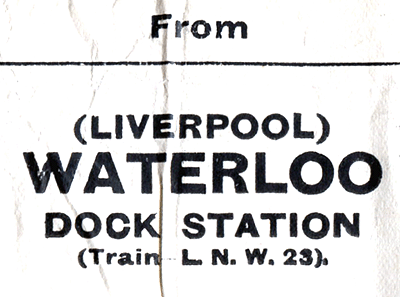 Passenger trains operated by the LNWR passed through Waterloo Goods station and over Waterloo Road on their way to and from Riverside. Signals on either side of Waterloo Road protected the level crossing. On the east side there was a 1-lever ground frame which controlled a scotch block on the single, running line. Once the level crossing gates were operated, the lever was reversed, the scotch block was lifted clear of the running line and an Annetts Key could be removed from the lever. This Annetts key could then be used to unlock the signal protecting the crossing and the signal, which was hand-operated, could be cleared for the passage of the train. The signal on the west side of the crossing was MD&HB property. Passenger trains operated by the LNWR passed through Waterloo Goods station and over Waterloo Road on their way to and from Riverside. Signals on either side of Waterloo Road protected the level crossing. On the east side there was a 1-lever ground frame which controlled a scotch block on the single, running line. Once the level crossing gates were operated, the lever was reversed, the scotch block was lifted clear of the running line and an Annetts Key could be removed from the lever. This Annetts key could then be used to unlock the signal protecting the crossing and the signal, which was hand-operated, could be cleared for the passage of the train. The signal on the west side of the crossing was MD&HB property.
The 1904 Railway Clearing House Handbook of Stations listed Waterloo as having a 25 ton lifting crane and being able to handle livestock.
On 1 January 1923 Waterloo Goods station became part of the London Midland & Scottish Railway (LMS). On 10 February 1923 the LMS renamed the station as Waterloo Dock but it seems to have still been referred to more generally as Waterloo Goods.
During the Second World War Liverpool was a target for German bombers. Between December 1940 and July 1941 the city was subjected to sustained bombing and Waterloo Goods station was badly damaged although it continued to function. Some of the roofed sections of the shed were so badly damaged they had to be demolished. The station was partly rebuilt having an open section with canopies over the loading platforms.
On 1 January 1948 the station became part of British Railways [London Midland Region] (BR[LMR]). After the war it had been business as usual at first, but as the 1950s progressed railways lost a great deal of traffic which transferred to road vehicles. The BR Handbook of Stations for 1956 listed Waterloo as having only a 7 ton lifting crane and livestock was no longer handled.
Waterloo Goods closed as a public goods station on 30 September 1963. Private traffic still operated to the station serving an adjacent seed mill.
By this time the line from Waterloo Goods box to Riverside was worked by pilotman. A BR pilotman worked the section from Waterloo Goods box to Waterloo Road Crossing and a MD&HB pilotman worked from Waterloo Road Crossing to Riverside.
In 1968 a section of the station adjacent to Waterloo Road was taken over by a construction company that was building the Kingsway Mersey Tunnel. A large ventilation shaft was built on the site just to the north of the Riverside line.
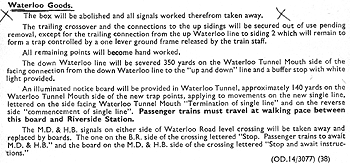 Waterloo Goods signal box closed on Sunday 6 September 1970 (see notice left) by which time all goods traffic had ceased. The double-track line between Waterloo Goods station and the Waterloo Tunnel Mouth signal box at Edge Hill became single track on the same day, the former down line being made redundant. Waterloo Road Crossing ground frame and signals were dispensed with and replaced with ‘Stop and await instructions’ boards. Waterloo Goods signal box closed on Sunday 6 September 1970 (see notice left) by which time all goods traffic had ceased. The double-track line between Waterloo Goods station and the Waterloo Tunnel Mouth signal box at Edge Hill became single track on the same day, the former down line being made redundant. Waterloo Road Crossing ground frame and signals were dispensed with and replaced with ‘Stop and await instructions’ boards.
Riverside passenger trains continued to pass through until 25 February 1971.
In the summer of 1971 an interesting and unofficial event took place. Members of a local preservation society ran an industrial tank locomotive that they kept in a MD&HB shed into Waterloo goods depot. They ran it back and forward over the various sidings within the goods station for several hours before returning it to its shed. This unofficial visit was the last time any locomotive ever moved around within the station.
An engine of the MD&HB passed through the goods station at the end of July 1971 and ran up to Edge Hill. It was probably the last rail movement over the Waterloo branch which closed on 19 December 1973. The lines were lifted and by the late 1970s the goods station had been demolished.
In December 2016 the Great Howard Street bridge was demolished. It had become unstable and needed to be replaced.
Notice and plan from Tony Graham
Sources:
- Britain's First Trunk Line - Norman W Webster - Adams & Dart 1972
- Rails to Port and Starboard - John W Gahan - Countyvise 1992
- The London & North Western Railway - M C Reed - Atlantic 1996
See also: Liverpool Riverside,
The Liverpool Riverside & Waterloo Goods Station branch and
The Edge Hill & Waterloo branch railway
See also: Liverpool Great Howard Street |

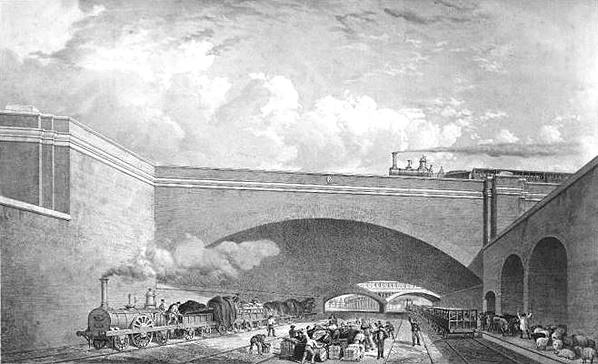
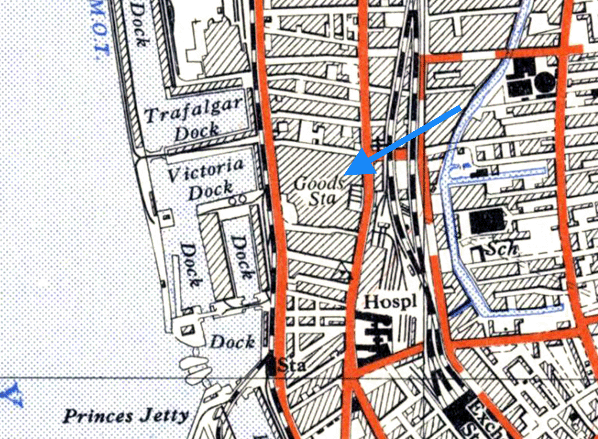
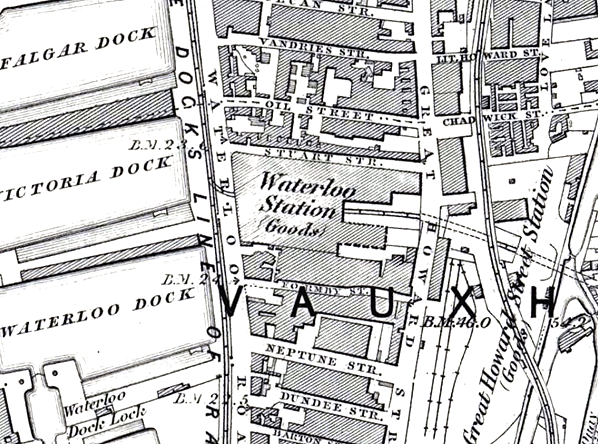
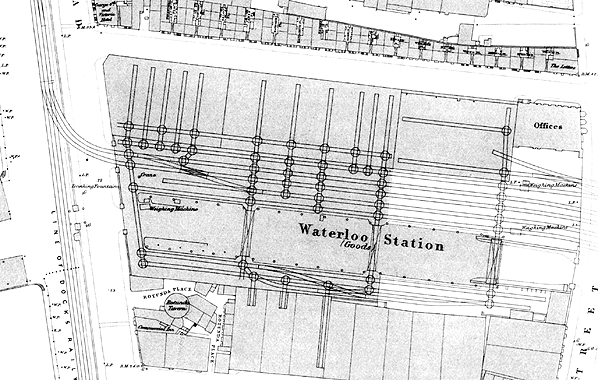
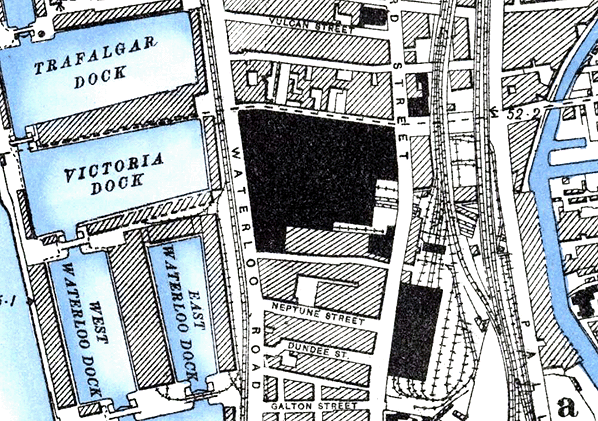
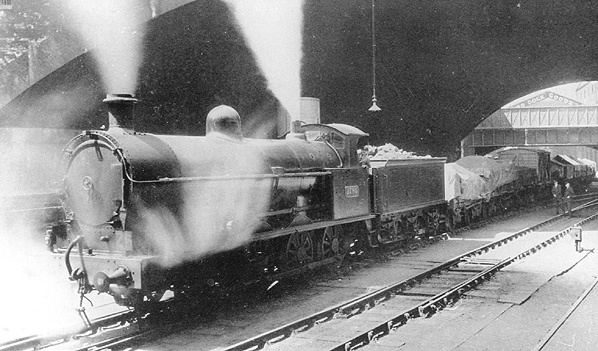
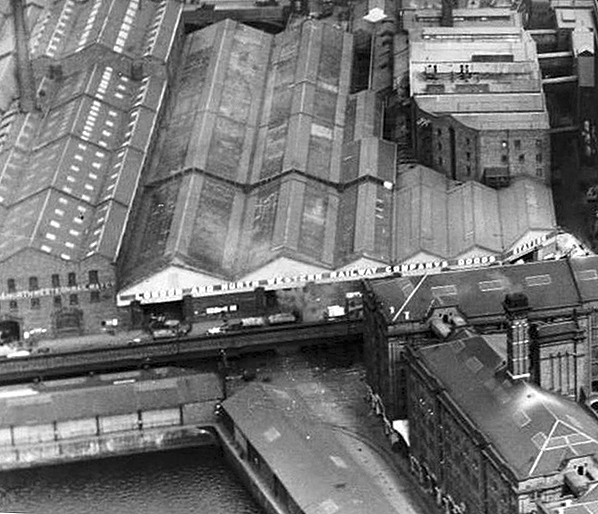
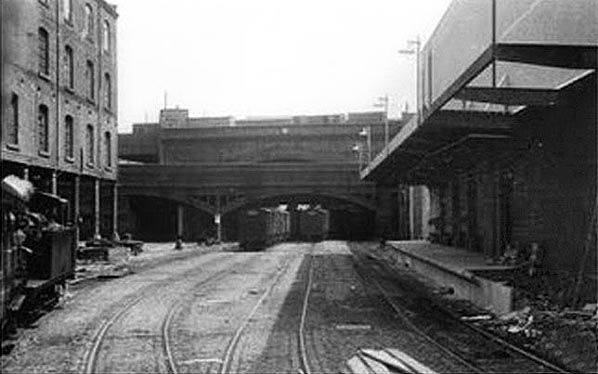
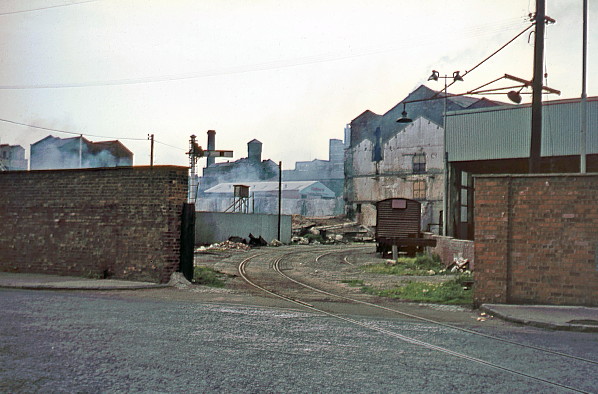 Looking north-east into Waterloo Goods station in 1967. The line seen heading off towards the right was the branch that ran to Liverpool Riverside station. Originally there had been a large shed at this location but it was destroyed by enemy action in December 1940.
Looking north-east into Waterloo Goods station in 1967. The line seen heading off towards the right was the branch that ran to Liverpool Riverside station. Originally there had been a large shed at this location but it was destroyed by enemy action in December 1940. 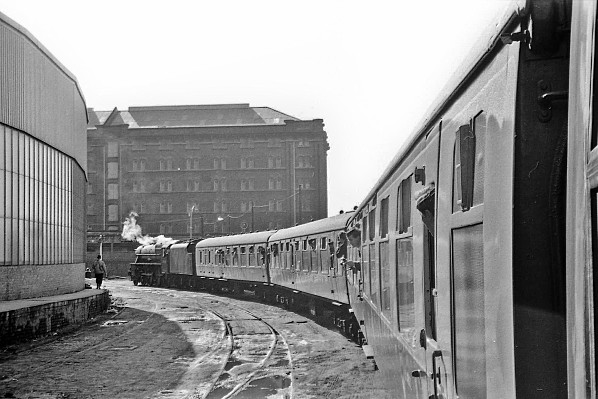 Waterloo Goods station seen looking west from the Lancastrian rail tour on 6 April 1968. The train was waiting for the signal that would allow it to cross Waterloo Road and continue on its journey to Liverpool Riverside station.
Waterloo Goods station seen looking west from the Lancastrian rail tour on 6 April 1968. The train was waiting for the signal that would allow it to cross Waterloo Road and continue on its journey to Liverpool Riverside station.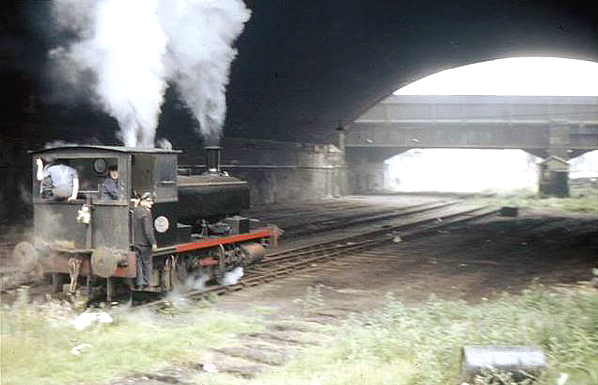
.jpg)
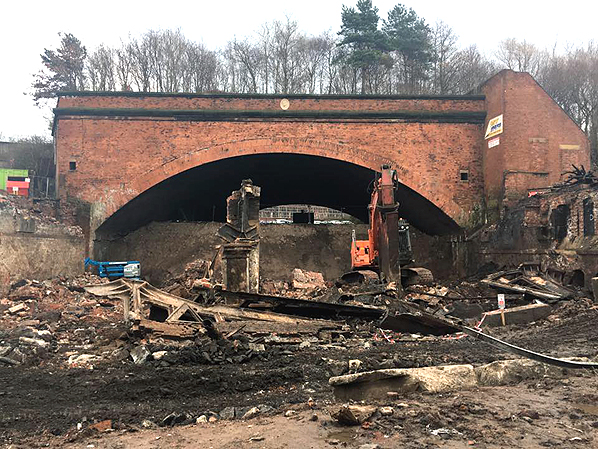


 Passenger trains operated by the LNWR passed through Waterloo Goods station and over Waterloo Road on their way to and from Riverside. Signals on either side of Waterloo Road protected the level crossing. On the east side there was a 1-lever ground frame which controlled a scotch block on the single, running line. Once the level crossing gates were operated, the lever was reversed, the scotch block was lifted clear of the running line and an Annetts Key could be removed from the lever. This Annetts key could then be used to unlock the signal protecting the crossing and the signal, which was hand-operated, could be cleared for the passage of the train. The signal on the west side of the crossing was MD&HB property.
Passenger trains operated by the LNWR passed through Waterloo Goods station and over Waterloo Road on their way to and from Riverside. Signals on either side of Waterloo Road protected the level crossing. On the east side there was a 1-lever ground frame which controlled a scotch block on the single, running line. Once the level crossing gates were operated, the lever was reversed, the scotch block was lifted clear of the running line and an Annetts Key could be removed from the lever. This Annetts key could then be used to unlock the signal protecting the crossing and the signal, which was hand-operated, could be cleared for the passage of the train. The signal on the west side of the crossing was MD&HB property.  Waterloo Goods signal box closed on Sunday 6 September 1970 (see notice left) by which time all goods traffic had ceased. The double-track line between Waterloo Goods station and the Waterloo Tunnel Mouth signal box at Edge Hill became single track on the same day, the former down line being made redundant. Waterloo Road Crossing ground frame and signals were dispensed with and replaced with ‘Stop and await instructions’ boards.
Waterloo Goods signal box closed on Sunday 6 September 1970 (see notice left) by which time all goods traffic had ceased. The double-track line between Waterloo Goods station and the Waterloo Tunnel Mouth signal box at Edge Hill became single track on the same day, the former down line being made redundant. Waterloo Road Crossing ground frame and signals were dispensed with and replaced with ‘Stop and await instructions’ boards.
 Home Page
Home Page